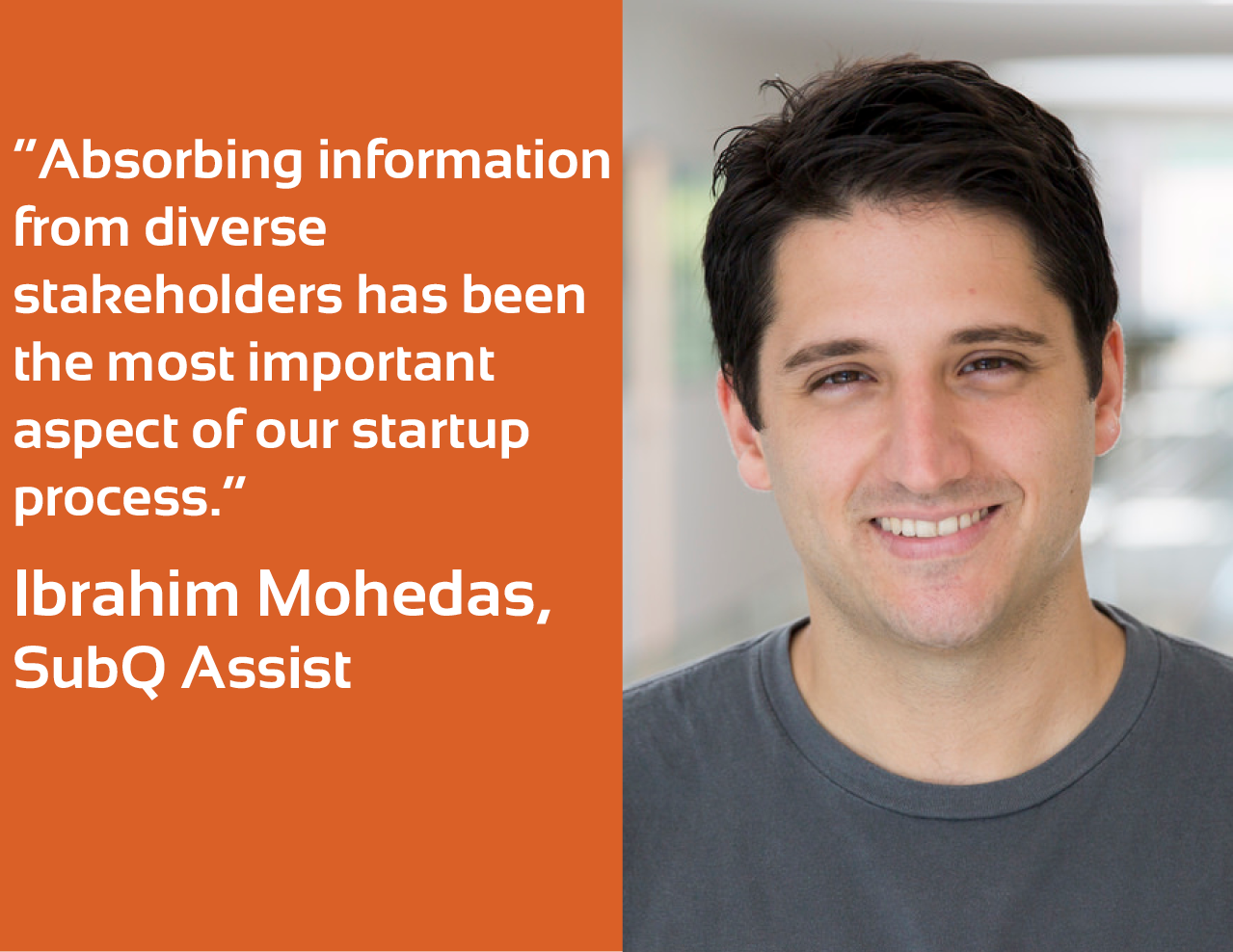
An innovator’s journey from idea to market can be challenging and complicated – but also rewarding. Our new Innovator Spotlight series explores how inventor-entrepreneurs in our network have evolved since their early beginnings. Our goal is to share key learnings and best practices with early stage science and technology inventors embarking on a path of innovation and entrepreneurship.
The first innovator spotlight is Ibrahim Mohedas, a post-doctoral researcher in the department of Mechanical Engineering at the University of Michigan, and founder of SubQ Assist. Mohedas is an E-Team grantee and Xcelerator participant. His venture has developed an assistive medical device that makes it easier and safer for healthcare workers in low-resource settings to administer contraceptive implants.
What was the inspiration behind your innovation?
My doctoral research focused on the use of ethnographic techniques during front-end design of medical devices for low- and middle-income countries. During my research, I conducted hundreds of stakeholder interviews and spent over 500 hours of observing healthcare settings in Ethiopia, Ghana, and Rwanda. While performing observations and interviews with another PhD researcher at St. Paul’s Hospital in Addis Ababa, Ethiopia, we saw women being referred to the hospital to have their contraceptive implants removed because they hadn’t been administered accurately. We identified an opportunity to both improve how implants are administered and enable more healthcare providers to deliver this service to underserved areas. That was the beginning of SubQ Assist.
How has your mission evolved?
Our main mission has changed very little over the years. The broad goal of our project has remained the same, but the details have been ironed out and our knowledge of both the global health landscape and implant administration has grown tremendously.
Knowing what you know now, what would you have done differently?
In the beginning of the startup process, I would have focused less on the design of the device and more on the business model. Thinking more about IP, market analysis, distribution, and manufacturing early on would have changed how we approached the design process for the better. Our experience in the E-Team program and the Xcelerator training definitely helped bring these issues to light. Prior to these programs, we were overly obsessed with the technology side of development, largely ignoring the commercial side. The programs emphasized the need to approach product development in a holistic manner, where you consider all stakeholders involved and all phases of development no matter how early you are in the process.
Throughout your journey, what’s been your most valuable skill?
Listening and building relationships during the customer discovery process. Absorbing information from diverse stakeholders has been the most important aspect of our startup process. We spoke to not only clinicians in the U.S., Ghana, and Ethiopia, but also Ministry of Health officials, manufacturers, NGOs (working in Ethiopia and globally), regulatory officials, and procurement officers. We also gained insights from people who understood the global market and the forces moving it as well as people who understood the microscale issues of healthcare providers on the ground. Gathering information from so many different people was key to helping us zero in on the right product to make.
What advice do you have for other student inventors?
Get out of the lab or the classroom and talk to the people who will be buying, fixing, distributing, manufacturing, regulating, or investing in your product. You need buy-in from all these stakeholders to succeed. The sooner you answer the critical questions related to your product’s overall business plan, the better off you will be.
What’s next for you?
My focus right now is moving this product to commercialization. SubQ Assist is in the process of incorporating. We’re also pursuing grant funding from Grand Challenges Canada to help move our device to the next phase. We recently submitted paperwork to obtain approval for a clinical trial at the University of Michigan. We’re also developing an investment-ready business plan. We’re very excited for the next phase of our journey.
Learn more about VentureWell’s early-stage innovator programs here. Read more innovator-related stories here.